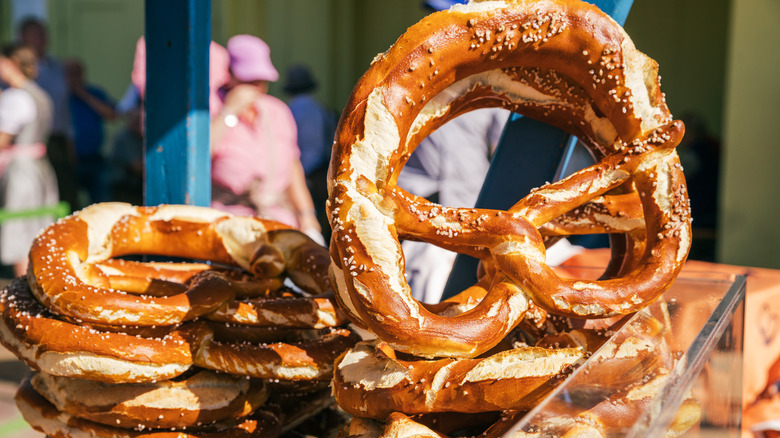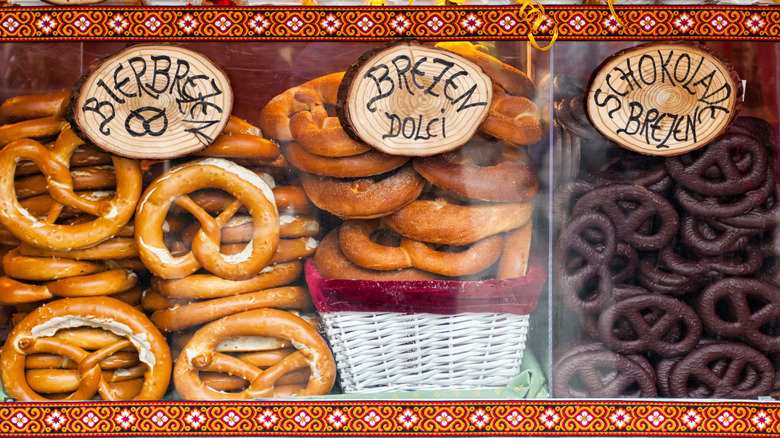The Buttery Bavarian Pretzels That Put American Varieties To Shame
Whether they're crunchy bite-sized snacks left in bowls at your local bar or hot, soft, and fresh out of a steamy New York street cart, chances are you've tried some form of pretzel before. However, a trip to Bavaria will put these everyday snacks into a much more delicious and revered light.
Germany is one of the purported birthplaces of the pretzel, and its largest state, Bavaria, offers a uniquely delicious soft pretzel with numerous variations. Bavarian pretzels, also known as brezen or brezel, are hot soft pretzels with a chewy, subtly sour crumb and crisp, browned crusts. The shiny brown color and crunchiness of their crusts come from dipping the pretzel dough in a bath of diluted lye, which leads to them being referred to as lye pretzels or laugenbrezel.
Not only will you see laugenbrezel sold at Christmas markets, Oktoberfest, and biergartens in Bavaria, but they're also a ubiquitous staple at most restaurants and culinary gatherings. Germans eat them as either an accompaniment to a meal or as the meal itself. Brezen come in sweet and savory varieties: Some are covered in cheese, others topped with meat, and sweet renditions come stuffed with custard, dotted with raisins, or topped with sugar and almonds. Perhaps the most beloved version of Bavarian brezen is the butterbrezen, a fresh Bavarian pretzel sprinkled with coarse salt, sliced in half, and stuffed with fresh butter.
Differences between American and Bavarian pretzels
Germans brought the pretzel to the New World in the early 1800s, but the food has since diverged significantly from the brezen found in Bavaria. First off, hard, crunchy, cracker-like pretzels are much more widespread in the U.S. than soft pretzels. But, even American-style soft pretzels have a different texture and flavor than their German counterparts.
German pretzels have thick, bulbous, and doughy borders with thinner, crunchier crossed arms in the middle of some varieties. Many Bavarian pretzel recipes cut the bottom of the pretzel lengthwise before baking it to achieve a fat underbelly with an exposed crumb. American pretzels tend to have uniform thickness for both limbs and borders. Bavarian pretzels also have a denser, chewier crumb and a tangier finish than American soft pretzels.
Despite the emergence of artisanal soft pretzel chains like Auntie Anne's and Wetzel's Pretzels, the diversity of pretzel varieties and garnishes in Bavaria far outnumbers American offerings. Bavarian pretzels are often topped with caraway, sesame, sunflower, pumpkin, or poppy seeds, and there are different recipes for Christmas, New Year's, and Easter. While mustard, cheese, and beer are popular soft-pretzel pairings in both Germany and America, stuffing a hot, steamy pretzel with salt and butter à la butterbrezen is a revelation you can only savor in Bavaria.

